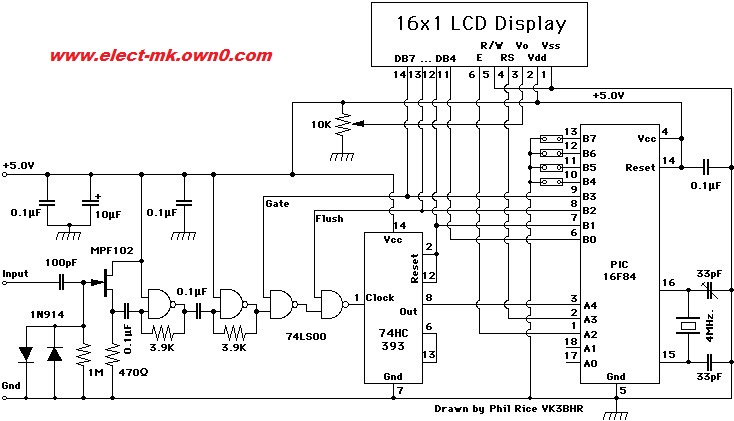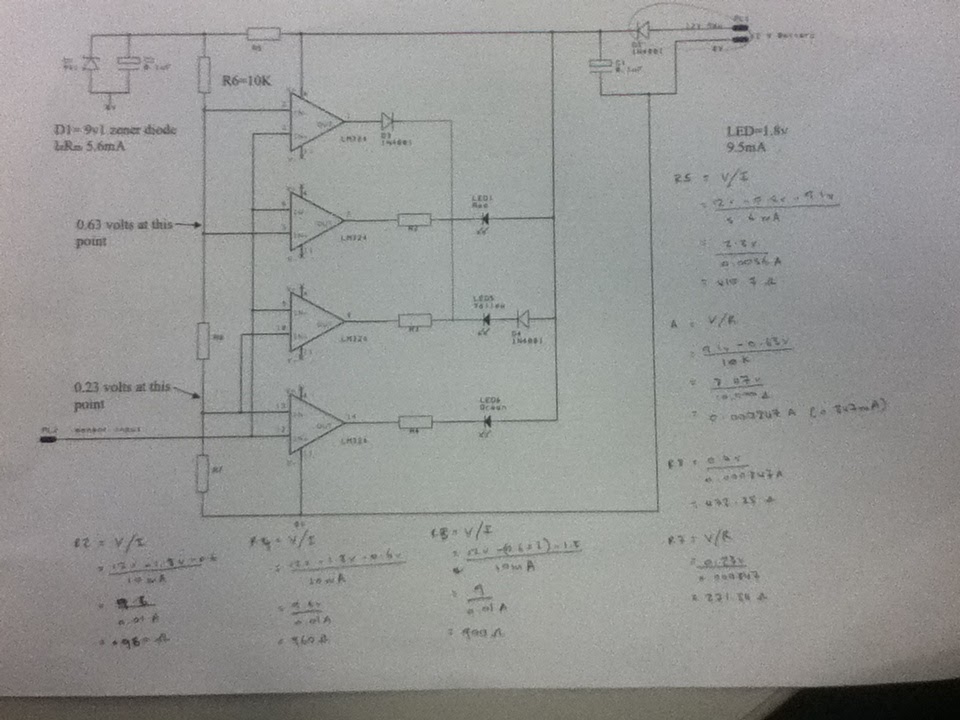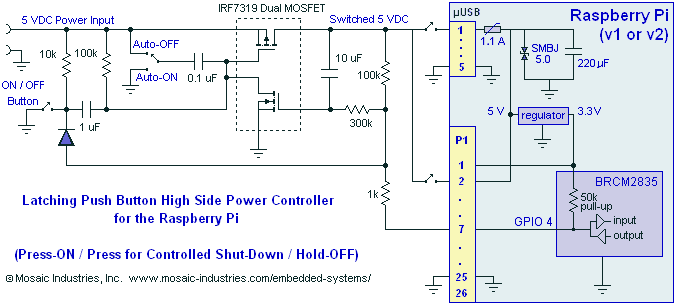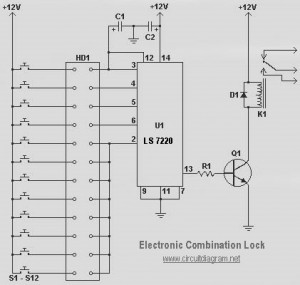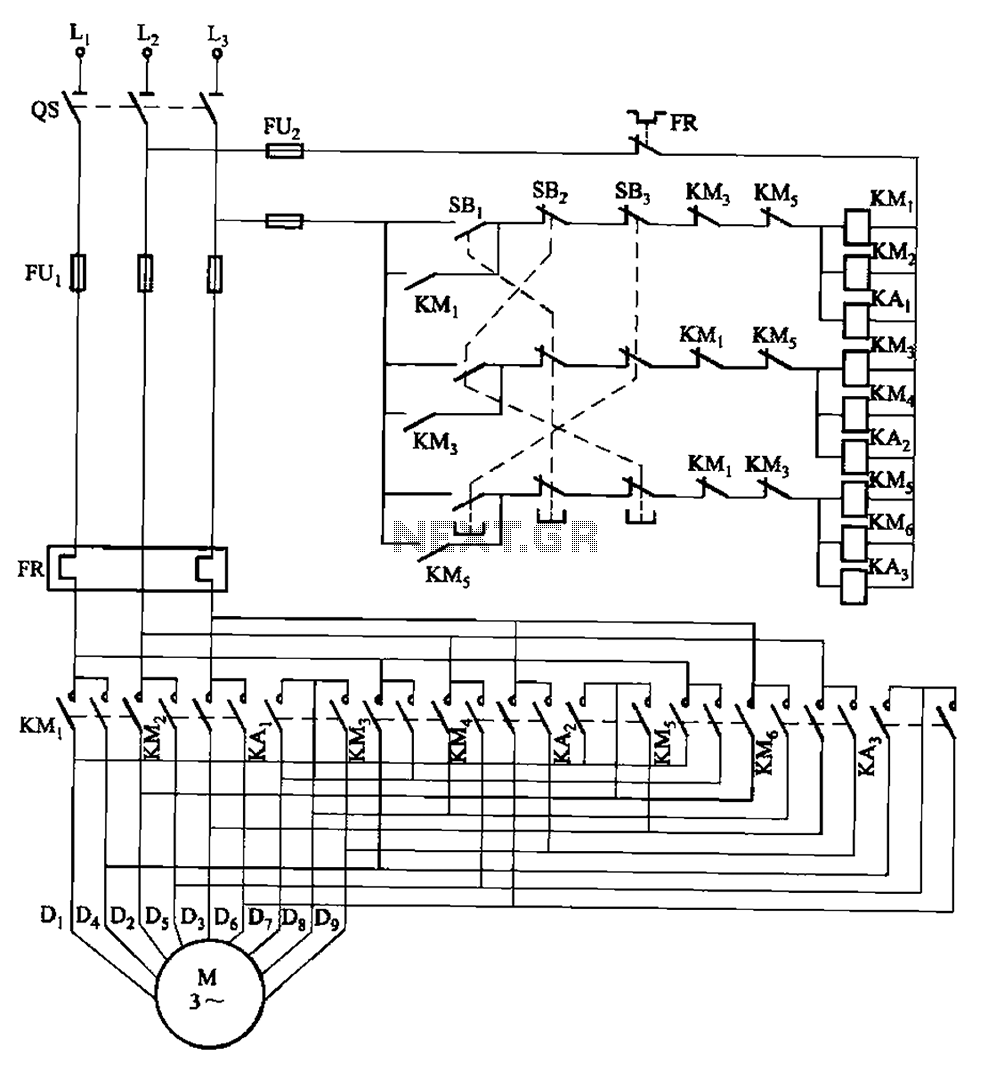
CD4060 production time controller circuit diagram
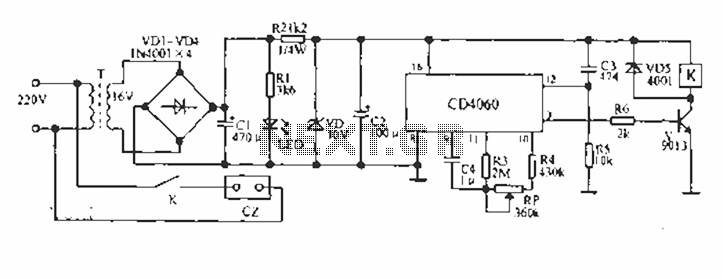
A CD4060 production time controller circuit is illustrated below. It is connected in such a way that R5 and C3 form a differential circuit to create a delay time from the start. Under the influence of the oscillating signal, the CD4060 counter begins operation, and within three clock cycles, the first output (pin 14) transitions from low to high. The time required for this transition is calculated as t = 213 / 2.2 kHz (seconds). During this interval, the output remains low, which turns off transistor V. Once the delay time elapses, the output transitions from low to high, allowing R6 to limit the current and saturate the transistor, thereby energizing relay K and activating the load. The circuit's delay time can be adjusted within the range of 2.1 to 4 hours.
The CD4060 integrated circuit serves as a versatile timer and oscillator, leveraging both its counter functionality and oscillator capabilities. The circuit operates by generating a square wave signal through an external resistor (R5) and capacitor (C3), which determines the frequency of oscillation. The counter counts the oscillations, and the output at pin 14 signifies the completion of a predetermined count.
The transition of the output from low to high at pin 14 activates the subsequent components in the circuit. The transistor V acts as a switch, controlling the current flow to relay K. When the output is low, the transistor is turned off, preventing current from flowing through the relay coil and keeping the load de-energized. As the output transitions to high, the voltage across R6 ensures that the transistor is driven into saturation, allowing maximum current to flow through the relay coil, thus closing the relay contacts and energizing the load.
The adjustable delay time, achieved through the selection of R5 and C3 values, allows for flexibility in timing applications. The circuit can be configured for various time delays, making it suitable for applications requiring precise timing control, such as in industrial automation, home appliances, or any system requiring delayed activation of a load. The range of 2.1 to 4 hours provides a significant window for adjustment, accommodating different operational needs. Overall, this CD4060-based time controller circuit exemplifies a practical solution for timing and control applications in electronic systems.With a CD4060 shown below production time controller circuit connected instantly, guaranteed by R5, C3 constitute a differential circuit delay time from scratch. Under the action of the oscillating signal, the counter starts work CD4060 within 3 feet for the first output of the counter 14, to make 3 feet from low to high level, the time required for t = 213 2.2KC (seconds), low voltage output during this period of 3 feet off the transistor V. When the delay time comes, jump 3 feet from low to high, so that by limiting R6 V saturated conduction, the relay pull-K, the load is energized.
The circuit delay time within 2.1 to 4 hours to be adjusted.
The CD4060 integrated circuit serves as a versatile timer and oscillator, leveraging both its counter functionality and oscillator capabilities. The circuit operates by generating a square wave signal through an external resistor (R5) and capacitor (C3), which determines the frequency of oscillation. The counter counts the oscillations, and the output at pin 14 signifies the completion of a predetermined count.
The transition of the output from low to high at pin 14 activates the subsequent components in the circuit. The transistor V acts as a switch, controlling the current flow to relay K. When the output is low, the transistor is turned off, preventing current from flowing through the relay coil and keeping the load de-energized. As the output transitions to high, the voltage across R6 ensures that the transistor is driven into saturation, allowing maximum current to flow through the relay coil, thus closing the relay contacts and energizing the load.
The adjustable delay time, achieved through the selection of R5 and C3 values, allows for flexibility in timing applications. The circuit can be configured for various time delays, making it suitable for applications requiring precise timing control, such as in industrial automation, home appliances, or any system requiring delayed activation of a load. The range of 2.1 to 4 hours provides a significant window for adjustment, accommodating different operational needs. Overall, this CD4060-based time controller circuit exemplifies a practical solution for timing and control applications in electronic systems.With a CD4060 shown below production time controller circuit connected instantly, guaranteed by R5, C3 constitute a differential circuit delay time from scratch. Under the action of the oscillating signal, the counter starts work CD4060 within 3 feet for the first output of the counter 14, to make 3 feet from low to high level, the time required for t = 213 2.2KC (seconds), low voltage output during this period of 3 feet off the transistor V. When the delay time comes, jump 3 feet from low to high, so that by limiting R6 V saturated conduction, the relay pull-K, the load is energized.
The circuit delay time within 2.1 to 4 hours to be adjusted.

